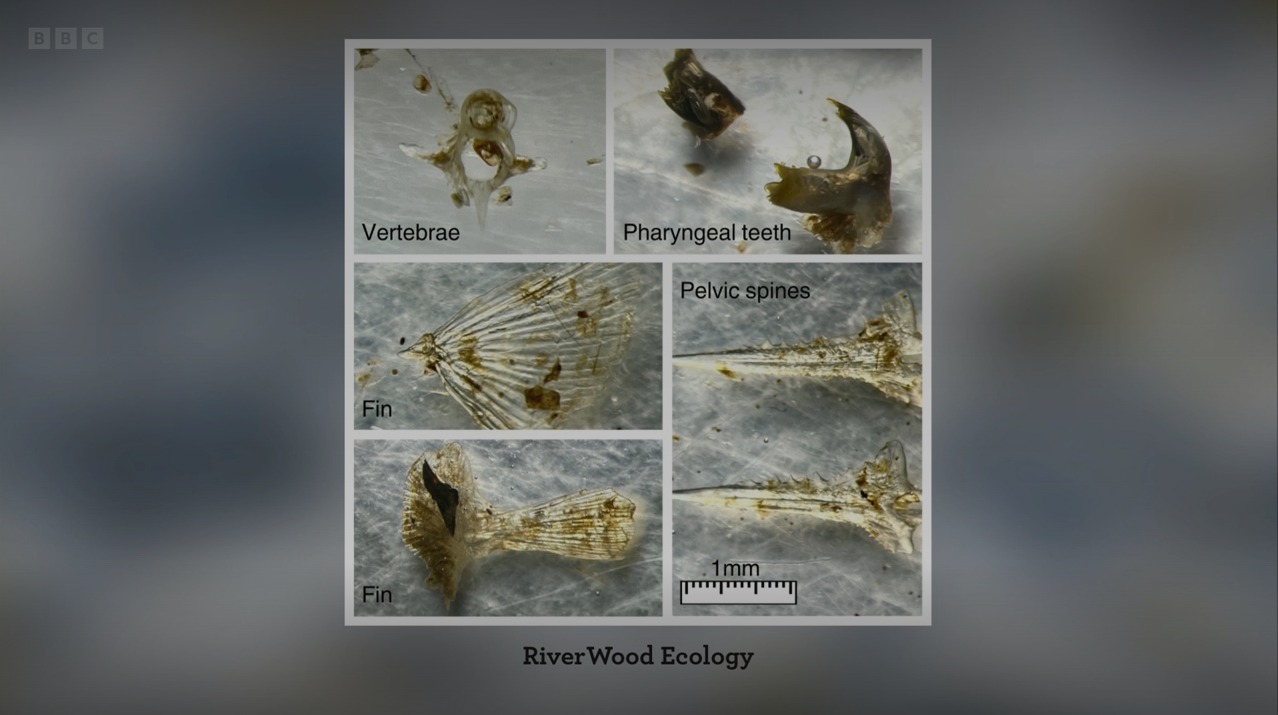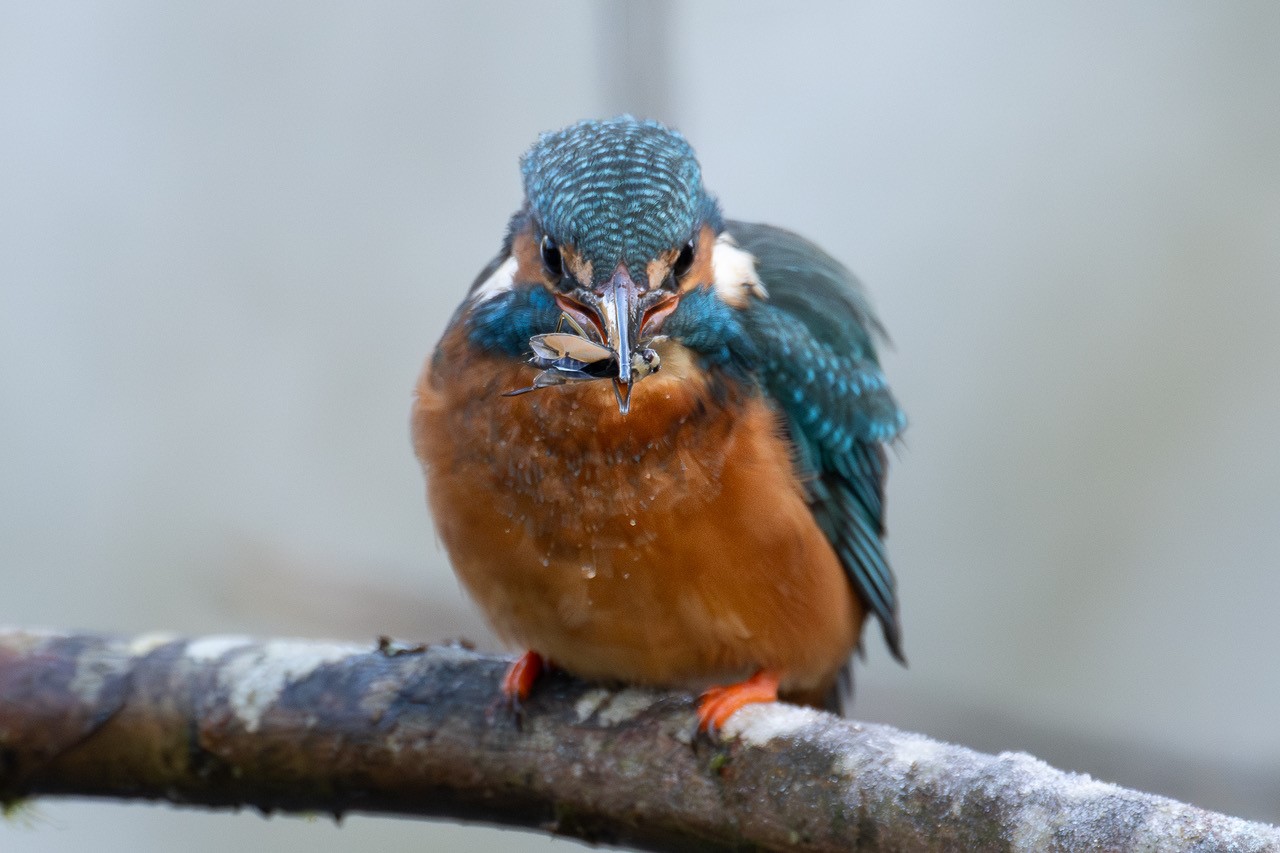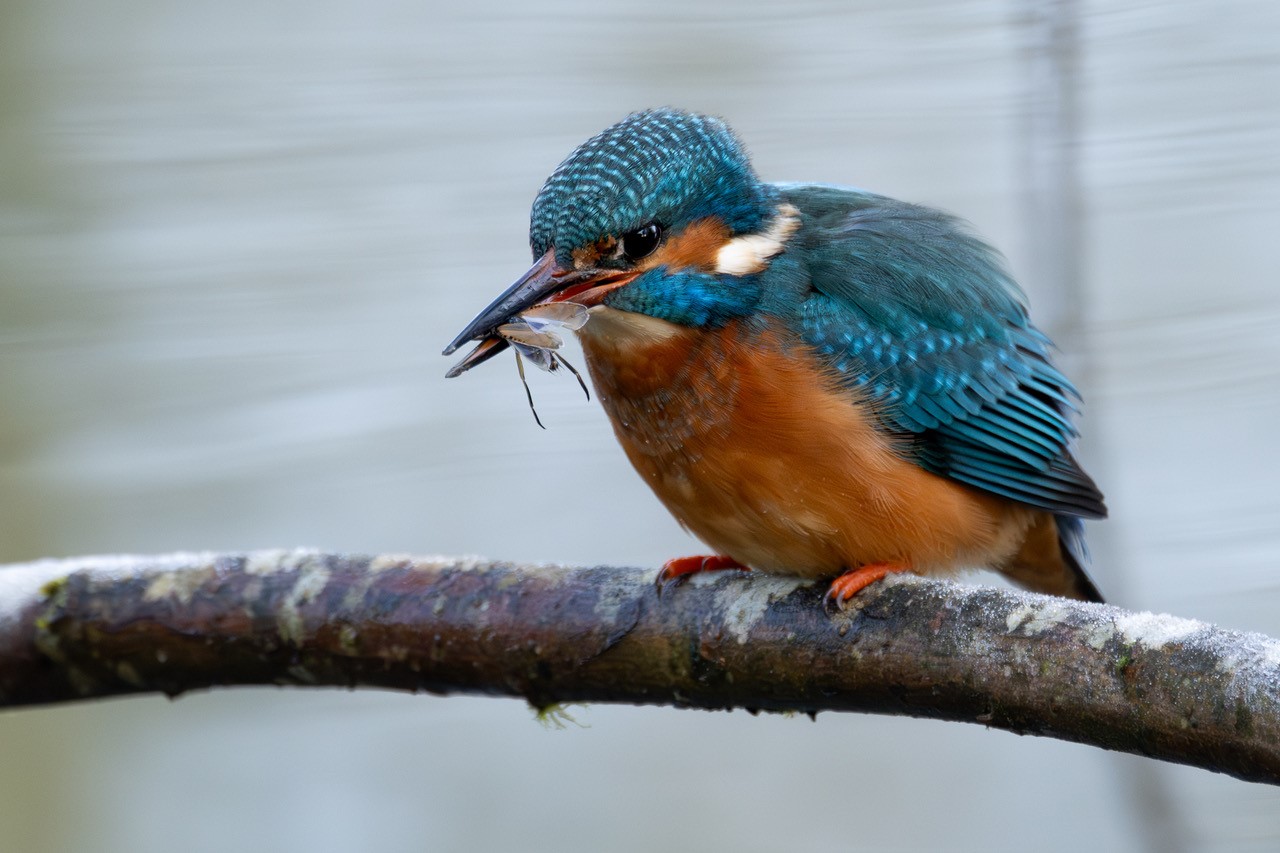An Updated Kingfisher Diet Analysis
At the beginning of this year, we were excited to share some interesting results we had gotten from the dissection of a kingfisher pellet found at Montrose Basin. You can read that blog here to learn more about the story.
We wanted to do an updated blog post because of how much wonderful feedback we got from our original kingfisher pellet analysis! Our article was shared to Scottish Wildlife Trust members through our email newsletter, and was also posted on our social media pages. We couldn’t have predicted what happened next: not only did we receive lots of fascinating emails containing theories on what the unidentified contents of the kingfisher pellet might have been, we also received actual kingfisher pellets in the post from other kingfisher enthusiasts across the country. And then – our findings were used in a segment on Winterwatch! It was a wild ride, all stemming from us curiously collecting a kingfisher pellet back in November.
We’re Winterwatch famous!
Just after we had posted our blog in January, one of our volunteers at Montrose Basin got in touch to say that Chris Packham had mentioned how much he would love to dissect a kingfisher pellet on the latest Winterwatch episode. It was too much of a coincidence to ignore, so we quickly shared our blog post with the Winterwatch team through social media. We were thrilled to have our findings featured in a little segment on the last episode of the series.
Here’s a screenshot of our microscope photos used on BBC Winterwatch. RiverWood Ecology Ltd is the freshwater environmental consulting company run by our Teacher Naturalist Rachel.

Invertebrate ID mystery solved
In our original blog, there were some invertebrate wing cases and femurs in the kingfisher pellet that we couldn’t quite identify. But thanks to Scottish Wildlife Trust members getting in touch with their own kingfisher expertise, we were able to piece the jigsaw together and solve the mystery!
John Agnew was kind enough to share some excellent photos he’s taken of a kingfisher in East Kilbride. At his local reserve, he saw this kingfisher dive for (presumably) a fish, only to catch a common backswimmer instead! He then watched it eat it, then quickly dive again only to catch another one. So we can only conclude that kingfishers do indeed deliberately eat freshwater invertebrates as well as fish. The unidentified wing cases and femurs in our pellet have now been confidently identified as those of Notonecta glauca, or the greater water boatman/common backswimmer. And we were only able to come to that conclusion because of kingfisher knowledge kindly being shared with us from across Scotland! You can see John Agnew’s photos of the kingfisher below, with the water boatman in its beak.


Other kingfisher pellets
After seeing the kingfisher diet segment on Winterwatch, our Teacher Naturalist Rachel was even sent kingfisher pellets in the post. We’re not sure if we class this as ‘fan mail’ or not, but it was interesting to be able to analyse the difference between a Montrose kingfisher’s diet with a London kingfisher’s diet.
Rachel’s dissection of these kingfisher pellets from the River Mole revealed that the diet consists of fish like bullhead and minnow, and also Notonecta glauca, the same freshwater invertebrate our kingfisher had been eating. We were sad to find a small microplastic bead in the pellet too, around 0.5mm in size.
Now that we’ve entered Spring, the kingfishers at Montrose Basin have headed up the River South Esk for breeding season, and it’s likely we won’t see many at all until around July or August. The last kingfisher sighting in front of the visitor centre was at the end of March, when we saw him attempting to fish on a very windy day.
If anyone would like to send through any more fascinating kingfisher findings, then please get in touch! Our email address is montrosebasin@scottishwildlifetrust.org.uk
Help protect Scotland’s wildlife
Our work to save Scotland’s wildlife is made possible thanks to the generosity of our members and supporters.
Join today from just £3 a month to help protect the species you love.
Preface
At the beginning of this year, we were excited to share some interesting results we had gotten from the dissection of a kingfisher pellet found at Montrose Basin. You can …
